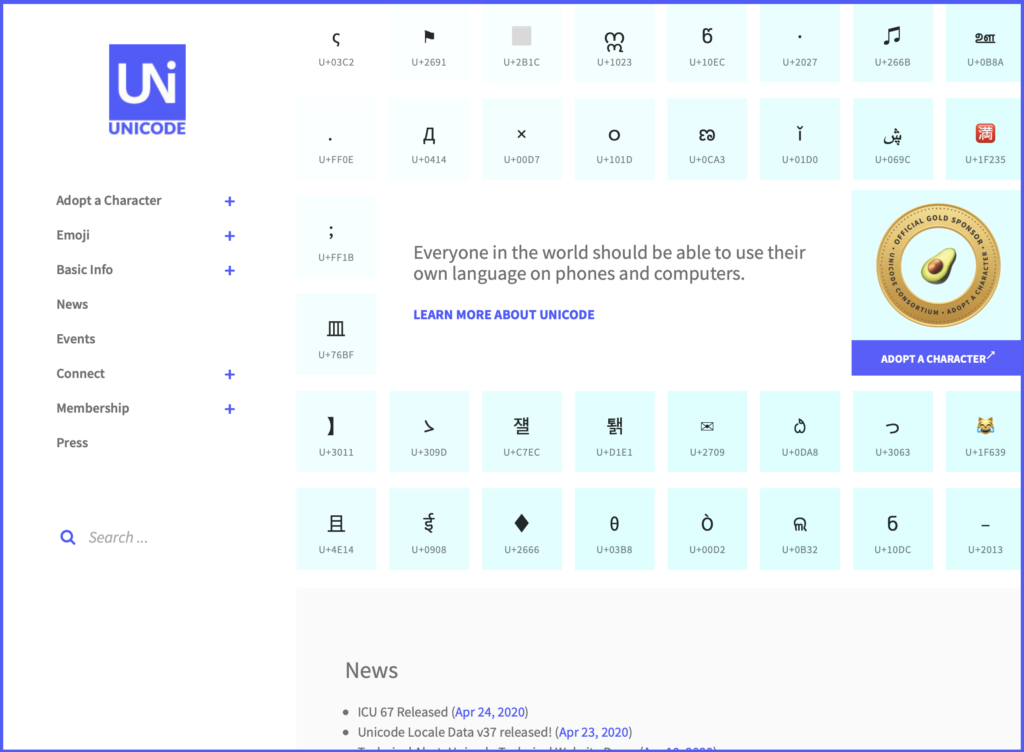บทความนี้เป็นส่วนหนึ่งของมินิซีรีส์ “เล่นกับ Big Data ภาษาไทย ต้องเข้าใจ Unicode” โดยผู้อ่านสามารถเข้าถึงภาคแรกของบทความนี้ได้ที่นี่ครับ : เล่นกับ Big Data ภาษาไทย ต้องเข้าใจ Unicode : Part 1
ในบทความที่แล้วนั้น เราได้ทำความรู้จักกับ Unicode ซึ่งเป็นมาตรฐานสากลเพื่อช่วยให้การสื่อสารด้วยข้อความภาษาต่าง ๆ ทั่วโลกเกิดขึ้นได้อย่างเสมอภาคและเป็นระบบ และยังได้เรียนรู้กับ ASCII representation, Unicode representation, encoding and decoding สำหรับบทความนี้ เราจะดูกันว่า ความรู้เบื้องต้นเหล่านี้สามารถช่วยเราแก้ปัญหาต่าง ๆ ในสถานการณ์จริงได้อย่างไร ผมขอเสนอสองตัวอย่าง คือ เวลาเราจัดการกับ JSON เพื่อเขียนข้อมูลลงเป็นไฟล์ และ เวลาเราสร้าง BeautifulSoup object เพื่อทำ web scraping ครับ
จัดการกับ JSON เพื่อเขียนข้อมูลลงเป็นไฟล์
สมมติว่าเรามี JSON data ที่เรียบง่ายมากอันหนึ่งที่เราต้องการเขียนเก็บลงเป็นไฟล์ (serialization) ตาม Code Block 1
c = {'ไม่ระบุเพศ': 205, 'หญิง': 1040, 'ชาย': 510}
# dict
type(c)import json
with open('test.json', 'w') as json_file:
json.dump(c, json_file)ถ้าเราลองแปลง c ไปเป็น stream ให้ file pointer เขียนข้อมูลลงไฟล์ด้วยฟังก์ชัน json.dump ดูตาม Code Block 2 เราจะได้ผลลัพธ์ในไฟล์ test.json ดังนี้
{"u0e44u0e21u0e48u0e23u0e30u0e1au0e38u0e40u0e1eu0e28": 205,
"u0e2bu0e0du0e34u0e07": 1040,
"u0e0au0e32u0e22": 510}ทำใมเราได้ข้อความที่อ่านไม่ออก? เนื่องจาก json.dump มีพฤติกรรมตั้งต้น (default) ของฟังก์ชันนี้ ว่าจะแปลง JSON data เป็นข้อความ (ให้ file pointer) ที่มีแต่ตัวอักขระ ASCII เท่านั้น นั่นหมายความว่า ตัวอักขระประเภทอื่น ๆ จะถูก “escaped” หรือ แปลงให้อยู่ในรูปที่เขียนได้ด้วยอักขระ ASCII (เราแปลง “ช” เป็น “\u0e0a” ทุกตัวเป็นอักขระ ASCII หมด ทั้ง “”, “u”, “0”, “e”, “a”)
แต่เดี๋ยวก่อน ผู้อ่านสังเกตเห็นไหมครับ ว่าจริง ๆ แล้วเราอ่านผลของ json.dump ข้างต้นออก? ตัวอักษรภาษาไทยต่าง ๆ ไม่ได้อยู่ในกลุ่มอักขระ ASCII จึงถูกแปลงให้อยู่ในรูปของ Unicode code points นั่นเอง! ในบทความภาคแรก เราได้เรียนรู้ถึงเครื่องมือที่ช่วยให้เราดู Unicode code points ของตัวอักษรภาษาไทยต่าง ๆ ได้ ดังเช่นที่เราแปลง “ช” เป็น U+0E0A หรือ “\u0e0a” หากเขียนตามแบบที่ json.dump ใช้
รู้อย่างนี้แล้ว วิธีแก้ไขก็คือ เราปรับพารามิเตอร์ให้ json.dump ให้สนับสนุนการ serialize ที่มีตัวอักขระนอกเหนือจาก ASCII ด้วย แล้วเราก็เลือกเปิดไฟล์สำหรับการเขียนไฟล์ (writing operation) ที่สนับสนุน Unicode (ซึ่งเราจะใช้ UTF-8) ตาม Code Block 3 เราก็จะได้ผลลัพธ์ที่ต้องการแล้วครับ
import json
with open('test.json', 'w', encoding='utf8') as json_file:
json.dump(c, json_file, ensure_ascii=False)แล้วเราก็จะได้ผลลัพธ์ในไฟล์ test.json ใหม่ดังนี้ :
{"ไม่ระบุเพศ": 205, "หญิง": 1040, "ชาย": 510}เวลาเรา load JSON file กลับเข้ามาใน Python environment ก็สามารถทำได้ง่าย ๆ ดัง Code Block 4 ครับ
with open('test.json', 'r', encoding='utf8') as f:
read_json = json.load(f)ในการกำหนด UTF-8 ในฟังก์ชัน open นี้ บางครั้งก็เป็น default มาให้เลย แต่ขึ้นอยู่กับบาง OS / platform ค่าตั้งต้นอาจจะไม่ได้ใช้ UTF-8 ก็ได้ ถ้าจะให้แน่ใจ เราควรกำหนดลงไปชัด ๆ เลยตาม Code Block 3 และ 4 ดีกว่าครับ แต่หากใครสงสัยว่าระบบของตนเองใช้ default encoding อะไรอยู่ สามารถตรวจสอบได้ด้วยคำสั่ง import locale; locale.getpreferredencoding() ใน Python ครับ
สร้าง BeautifulSoup object เพื่อทำ Web Scraping จากข้อมูลภาษาไทย
สำหรับผู้อ่านที่ยังไม่คุ้นเคยกับพื้นฐาน web scraping ผู้อ่านสามารถศึกษาบทความที่สอนวิธีการทำ web scraping เบื้องต้นได้ที่บทความ ดึงข้อมูลจากเว็บไซต์ (Data Scraping) ด้วย Python Part 1 ครับ
เวลาที่เราทำ web scraping เราอาจจะต้องดึงข้อมูลจากเว็บที่มีข้อความที่ถูกเข้ารหัสในรูปแบบต่าง ๆ ที่ไม่ใช่ ASCII แล้วเวลาที่เราได้ข้อมูลที่ดึงจากหน้าเว็บมา เราอาจจะได้มาเป็น bytes sequence ที่มีรูปร่างหน้าตาดังตัวอย่างใน Code Block 5
html_content = b'<html><head>
<title>xe0xb8xa3xe0xb8xabxe0xb8
xb1xe0xb8xaaxe0xb8xabxe0xb8x99
xe0xb9x88xe0xb8xa7xe0xb8xa2xe0
xb8x87xe0xb8xb2xe0xb8x99xe0xb8
x9axe0xb8xa3xe0xb8xb4xe0xb8x81
xe0xb8xb2xe0xb8xa3xe0xb8xaaxe0
xb8xb8xe0xb8x82xe0xb8xa0xe0xb8
xb2xe0xb8x9e xe0xb8x81xe0xb8xa2
xe0xb8x9c.</title></head><body>
<p class="title">
<b>Very Important Data!
xe0xb8x84xe0xb9x89xe0xb8x99xe0
xb8xabxe0xb8xb2xe0xb8x82xe0xb9
x89xe0xb8xadxe0xb8xa1xe0xb8xb9
xe0xb8xa5xe0xb8xa3xe0xb8xabxe0
xb8xb1xe0xb8xaaxe0xb8xabxe0xb8
x99xe0xb9x88xe0xb8xa7xe0xb8xa2
xe0xb8x87xe0xb8xb2xe0xb8x99</b>
</p></body></html>'เราต้องการนำข้อมูล html_content นี้ไปสร้าง BeautifulSoup object ซึ่งในขณะนี้ อ่านไม่ออกเลย ? แต่จากบทความ Part 1 สังเกตว่าข้อมูลนี้อยู่ในรูปแบบ bytes (สังเกตตัว b หน้าสุด ในค่าของ html_content) แสดงว่าต้องถูกเข้ารหัส (encoded) อยู่แน่ ๆ ? ถ้าเราหาตัวถอดรหัส (decoder) ที่ถูกต้องได้ เราก็จะมีข้อความที่อ่านออก ไปทำการวิเคราะห์ต่อได้
ตอนนี้เรารู้จัก decoder หลายตัวแล้ว เช่น UTF-8, UTF-32, ASCII, แต่นอกจากนี้ยังมีเช่น ISO-8859-1 ที่บทความนี้จะไม่ขอกล่าวถึงในรายละเอียด แต่ ณ ตอนนี้ เราสามารถลองสิ่งต่อไปนี้
# UnicodeDecodeError: can't decode bytes in position 0-3 ...
html_content.decode("utf-32")
# Success!
html_content.decode()เราจะพบว่า UTF-8 สามารถ decode bytes sequence นี้ออกมาได้สำเร็จ! นั่นหมายความว่า เราสามารถสร้าง BeautifulSoup เพื่อวิเคราะห์ข้อมูลที่ได้มาดัง Code Block 7 และจะได้ผลลัพธ์ออกมาดัง Code Block 8
from bs4 import BeautifulSoup
soup = BeautifulSoup(html_content, 'lxml', from_encoding='UTF-8')
print(soup.prettify())<html>
<head>
<title>
รหัสหน่วยงานบริการสุขภาพ กยผ.
</title>
</head>
<body>
<p class="title">
<b>
Very Important Data! ค้นหาข้อมูลรหัสหน่วยงาน
</b>
</p>
</body>
</html>จริง ๆ แล้ว ใน BeautifulSoup จะมีความฉลาดอยู่คือ ถ้าเราลองสร้าง
soup = BeautifulSoup(html_content, 'lxml')โดยไม่ใบ้ encoding ให้เลย BeautifulSoup ก็สามารถที่จะเดา encoding ที่ใช้ และอาจจะถอดรหัสได้ถูกต้องอยู่ดี แต่การที่เราเข้าใจข้อมูล bytes sequence ที่เราได้มา และสามารถลองผิดลองถูกเพื่อหาการถอดรหัสที่ถูกต้องได้เอง ก็จะทำให้เราสามารถ debug ข้ามผ่านขั้นตอนการเตรียมข้อมูลภาษาไทยนี้ก่อนทำการวิเคราะห์ต่อไปได้อย่างรวดเร็ว
บทสรุป

Unicode เป็นมาตรฐานสากลที่รองรับการสื่อสารกันทางข้อความด้วยภาษาต่าง ๆ ทั่วโลก ในมินิซีรีส์นี้ เราได้เรียนรู้ถึงหลักการทำงานเบื้องต้น, วิธีที่ Unicode จัดระเบียบอักขระให้เก็บเลขอัตลักษณ์ได้โดยไม่ซ้ำกัน, การแสดงผล การเข้ารหัสและถอดรหัสของ Unicode, มาตรฐานที่เกี่ยวข้องอย่าง ASCII, และสถานการณ์ที่ความรู้เหล่านี้มีประโยชน์ในการใช้งานจริงบน Python
การสร้างความคุ้นเคยกับ concepts เหล่านี้ จะทำให้เราเล่นกับข้อมูลประเภทข้อความผ่าน APIs และ libraries ที่เกี่ยวข้องได้อย่างชำนาญขึ้น สามารถ debug ผลลัพธ์ที่ไม่เป็นไปตามคาดได้รวดเร็วขึ้น เพราะเมื่อเราเจอกับข้อมูลที่อ่านไม่ออก เราจะพอเดาได้ว่ามันคืออะไร (เช่น encoding ข้อความที่อยู่ในชนิดตัวแปร bytes, หรือข้อมูลกำลังอยู่ในรูปแบบ code points) ผมหวังว่าบทความนี้จะช่วยสร้างพื้นฐานที่สำคัญส่วนหนึ่งสำหรับการวิเคราะห์ข้อมูล Big Data ภาษาไทย และข้อมูลข้อความอื่น ๆ ต่อไปครับ ?
Former-Editor-in-Chief at BigData.go.th and Senior Data Scientist at Government Big Data Institute (GBDi )
- Papoj Thamjaroenpornhttps://temp.bdi.or.th/en/author/papoj/13 October 2023
- Papoj Thamjaroenpornhttps://temp.bdi.or.th/en/author/papoj/17 August 2023
- Papoj Thamjaroenpornhttps://temp.bdi.or.th/en/author/papoj/
- Papoj Thamjaroenpornhttps://temp.bdi.or.th/en/author/papoj/














